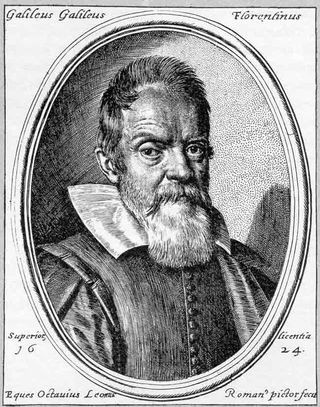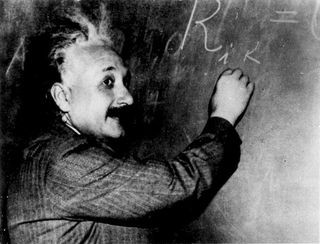The speed of light, traveling at approximately 670,616,629 mph, is a fundamental concept in physics and astronomy that influences our understanding of the universe; let SIXT.VN guide you through Vietnam’s wonders with the same swiftness and precision. This constant, often denoted as “c,” not only dictates the universe’s speed limit but also plays a crucial role in defining our measurements and understanding cosmic distances. As you plan your next adventure, consider the impact of this universal constant and how SIXT.VN ensures you experience seamless travel across Vietnam’s vibrant landscapes, from booking your hotel to touring Hanoi.
1. What Is the Exact Speed of Light in Miles Per Hour (MPH)?
The exact speed of light in a vacuum is approximately 670,616,629 miles per hour (1,079,252,849 kilometers per hour). This speed, often denoted as “c,” is not just a measure of how fast light travels, but a fundamental constant in physics that influences our understanding of space, time, and the universe itself. According to Einstein’s theory of special relativity, no matter or information can travel faster than light.
1.1. The Significance of the Speed of Light
Understanding the speed of light is critical in many scientific fields:
- Astronomy: It helps measure vast cosmic distances, with units like light-years based on how far light travels in a year.
- Physics: It’s integral to the theories of relativity, quantum mechanics, and electromagnetism.
- Technology: It affects the design of high-speed communication systems and satellite technology.
1.2. The Speed of Light and Its Role in Space Travel
Given the immense distances in space, even traveling at the speed of light poses significant challenges:
- Interstellar Distances: The nearest star system, Alpha Centauri, is 4.3 light-years away, meaning it would take light 4.3 years to reach us.
- Human Travel: Current spacecraft technology is far from achieving light speed. A journey to Alpha Centauri would take thousands of years with current methods.
- Theoretical Concepts: Some theories propose methods for faster-than-light travel, such as warp drives, but these remain speculative.
1.3. How the Speed of Light Impacts Our Perception of the Universe
The finite speed of light affects how we observe distant objects in the universe:
- Looking Back in Time: When astronomers observe galaxies billions of light-years away, they are seeing those galaxies as they were billions of years ago.
- Cosmic Microwave Background: The cosmic microwave background radiation, a remnant of the Big Bang, provides a glimpse into the early universe.
- Understanding Cosmic Evolution: By studying light from various distances, scientists can reconstruct the history and evolution of the universe.
 Abstract, futuristic image of blue light streaks radiating outward, giving the impression of rapid movement or traveling at high speed, inspired by the concept of faster-than-light travel
Abstract, futuristic image of blue light streaks radiating outward, giving the impression of rapid movement or traveling at high speed, inspired by the concept of faster-than-light travel
2. What Is a Light-Year and How Is It Used in Astronomy?
A light-year is the distance that light travels in one year, approximately 5.88 trillion miles (9.46 trillion kilometers). Astronomers use light-years to measure vast cosmic distances that are otherwise difficult to comprehend using standard units like miles or kilometers. Understanding light-years provides a tangible way to grasp the immense scale of the universe.
2.1. Calculating Cosmic Distances in Light-Years
Measuring distances in light-years helps simplify the scale of the universe:
- Proxima Centauri: The closest star to our Sun is about 4.24 light-years away.
- Milky Way Galaxy: Our galaxy is approximately 100,000 light-years in diameter.
- Andromeda Galaxy: The nearest major galaxy to the Milky Way is about 2.5 million light-years away.
2.2. Practical Applications of Light-Years
Light-years are crucial for:
- Mapping the Universe: Astronomers use light-years to create maps of the locations of stars, galaxies, and other cosmic structures.
- Understanding Cosmic History: Because light takes time to travel, observing objects millions of light-years away means seeing them as they were millions of years ago.
- Planning Space Missions: Estimating travel times for potential interstellar missions requires understanding distances in light-years.
2.3. Visualizing the Scale of a Light-Year
To conceptualize the size of a light-year:
- Earth’s Circumference: Imagine laying the Earth’s circumference (about 24,900 miles) in a straight line.
- Replication: Multiply that line’s length by 7.5 (the distance light travels in one second).
- Total Distance: Place 31.6 million of these lines end to end to approximate the distance of one light-year—nearly 6 trillion miles.
3. How Long Would It Take to Travel One Light-Year?
Traveling one light-year is an astronomical challenge, far beyond current technological capabilities. Using conventional methods, it would take tens of thousands of years to traverse such a distance, highlighting the vastness of space and the limitations of our current propulsion systems.
3.1. Travel Time with Current Technology
- Spacecraft Speed: The fastest spacecraft, like the Parker Solar Probe, reaches speeds of about 450,000 mph (724,000 km/h).
- Time Calculation: At this speed, traveling one light-year would take over 13,000 years.
- Challenges: Maintaining such speeds over interstellar distances requires overcoming issues like fuel, radiation exposure, and long-term equipment reliability.
3.2. Potential Future Technologies
Future technologies might reduce travel times, but significant hurdles remain:
- Nuclear Propulsion: Could potentially reach 4-5% of the speed of light, reducing travel time to a few centuries.
- Ion Drives: More efficient than chemical rockets but still too slow for interstellar travel.
- Warp Drives: Hypothetical technology that could bend space-time, allowing faster-than-light travel, but it remains theoretical.
3.3. The Implications of Interstellar Travel
Interstellar travel, even at reduced speeds, would have profound implications:
- Resource Needs: Massive amounts of resources would be required for long-duration missions.
- Human Factors: The psychological and physiological effects on astronauts during multi-generational journeys need consideration.
- Technological Advancements: Developing interstellar travel capabilities could spur innovation in areas like energy production, materials science, and life support systems.
4. Is the Speed of Light Constant Everywhere in the Universe?
The speed of light is considered a universal constant in a vacuum, meaning it is the same everywhere in the universe, regardless of the observer’s motion. This principle is a cornerstone of Einstein’s theory of special relativity and has been consistently supported by experimental evidence.
4.1. Evidence Supporting the Constancy of the Speed of Light
- Michelson-Morley Experiment: This famous experiment in the late 19th century failed to detect any change in the speed of light due to Earth’s motion, supporting its constancy.
- Modern Measurements: Modern experiments continue to confirm the speed of light’s consistency with high precision.
- Cosmological Observations: Observations of distant galaxies and the cosmic microwave background radiation are consistent with a constant speed of light throughout the universe’s history.
4.2. Situations Where the Speed of Light Appears to Change
While the speed of light is constant in a vacuum, it can appear to change under certain conditions:
- Refractive Index: When light travels through a medium like water or glass, it slows down due to interactions with the material’s atoms.
- Gravitational Fields: Strong gravitational fields can bend light, which can affect its perceived speed over a distance.
4.3. The Importance of the Constancy of the Speed of Light
The constancy of the speed of light is vital for:
- Physics Theories: It forms the basis of many fundamental theories in physics, including relativity and quantum electrodynamics.
- Cosmology: It helps scientists understand the structure and evolution of the universe.
- Technological Applications: It is crucial for technologies like GPS, satellite communications, and particle accelerators.
5. What Is Faster Than the Speed of Light?
While nothing can travel through space faster than light, the expansion of the universe itself can exceed the speed of light. This expansion, governed by general relativity, allows galaxies to recede from each other at speeds greater than the speed of light over vast distances.
5.1. Expansion of the Universe
- Hubble’s Law: The rate at which galaxies recede from us is proportional to their distance.
- Expansion Rate: The universe expands at a rate of approximately 42 miles (68 kilometers) per second per megaparsec (3.26 million light-years).
- Superluminal Recession: At a certain distance, known as the Hubble horizon, galaxies recede faster than the speed of light.
5.2. Quantum Entanglement
- Entangled Particles: When two particles are entangled, they become linked, and their fates are intertwined regardless of the distance separating them.
- Instantaneous Correlation: Measuring the property of one particle instantaneously affects the property of the other, even if they are light-years apart.
- No Information Transfer: While the correlation is instantaneous, it cannot be used to transmit information faster than light, so it doesn’t violate relativity.
5.3. Theoretical Concepts
- Wormholes: Hypothetical tunnels through space-time that could potentially allow faster-than-light travel by shortcutting the distance between two points.
- Warp Drives: Theoretical concepts that involve warping space-time to move an object faster than light without violating relativity.
6. Can Light Be Stopped or Slowed Down?
Yes, while the speed of light in a vacuum is constant, light can be slowed down and even stopped under certain conditions. This phenomenon occurs when light interacts with materials that alter its speed or when it is trapped in specific environments like ultra-cold atomic clouds.
6.1. Slowing Down Light
- Refraction: When light passes through a medium like water, glass, or diamond, it slows down due to interactions with the atoms in the material.
- Refractive Index: The extent to which a material slows down light is quantified by its refractive index.
6.2. Trapping and Stopping Light
- Ultra-Cold Atomic Clouds: Researchers have trapped light in ultra-cold clouds of atoms, effectively stopping it.
- Exceptional Points: Scientists have also proposed stopping light by creating “exceptional points” where two separate light emissions intersect and merge.
6.3. Practical Applications
- Optical Computing: Slowing and stopping light could lead to advances in optical computing, where light is used to perform computations.
- Quantum Information Processing: Manipulating light at such fine levels could enhance quantum communication and computing technologies.
 A sparkling diamond amongst dark coal-like rock.
A sparkling diamond amongst dark coal-like rock.
7. Is Faster-Than-Light Travel Possible?
The possibility of faster-than-light (FTL) travel is a topic of great interest in both science fiction and theoretical physics. While Einstein’s theory of special relativity states that nothing can travel through space faster than light, there are theoretical concepts that might allow for effective FTL travel by manipulating space-time itself.
7.1. Theoretical Concepts for FTL Travel
- Warp Drives: Proposed by physicist Miguel Alcubierre, a warp drive would involve contracting space in front of a spacecraft and expanding space behind it, creating a “warp bubble.”
- Wormholes: Also known as Einstein-Rosen bridges, wormholes are theoretical tunnels through space-time that could connect distant points.
7.2. Challenges and Limitations
- Energy Requirements: Creating and maintaining a warp drive or wormhole would require enormous amounts of energy, potentially more than the entire mass-energy of the universe.
- Exotic Matter: Some theories require exotic matter with negative mass-energy density, which has not been observed and may not exist.
- Causality Issues: FTL travel could lead to paradoxes, such as traveling back in time and altering past events.
7.3. Science Fiction vs. Science Fact
- Inspiration: Science fiction has often inspired scientists to explore FTL travel possibilities.
- Real Research: While FTL travel remains theoretical, it drives research into advanced physics and potential future technologies.
8. How Did Scientists First Measure the Speed of Light?
The measurement of the speed of light has a rich history, with early attempts dating back to ancient Greece. Over centuries, scientists developed increasingly sophisticated methods to determine this fundamental constant, each contributing to our current understanding.
8.1. Early Attempts
- Ancient Greece: Philosophers like Empedocles and Aristotle debated whether light had a speed, but they lacked the means to measure it.
- Galileo Galilei: In the 17th century, Galileo attempted to measure the speed of light using lanterns on distant hills, but his experiment was inconclusive due to the limitations of the distance.
8.2. Ole Rømer’s Discovery
- Jupiter’s Moons: In 1676, Danish astronomer Ole Rømer made the first quantitative estimate of the speed of light by observing the eclipses of Jupiter’s moon Io.
- Time Delays: Rømer noticed that the eclipses appeared to occur later when Earth was farther away from Jupiter, attributing this delay to the time it took light to travel the extra distance.
8.3. Later Refinements
- James Bradley: In 1728, English physicist James Bradley estimated the speed of light based on the aberration of starlight, achieving a more accurate result than Rømer.
- Hippolyte Fizeau and Léon Foucault: In the mid-19th century, French physicists Hippolyte Fizeau and Léon Foucault used terrestrial experiments involving rotating toothed wheels and mirrors to measure the speed of light with greater precision.
- Albert Michelson: Albert Michelson conducted numerous experiments, culminating in highly accurate measurements in the late 19th and early 20th centuries, which were the most precise for their time.
 Galileo Galilei is credited with discovering the first four moons of Jupiter.
Galileo Galilei is credited with discovering the first four moons of Jupiter.
9. What Role Does the Speed of Light Play in Einstein’s Theories of Relativity?
The speed of light is a cornerstone of Albert Einstein’s theories of relativity, particularly special relativity and general relativity. It serves as a fundamental constant that links space and time and underpins our understanding of gravity, energy, and mass.
9.1. Special Relativity
- Constant Speed of Light: One of the two postulates of special relativity is that the speed of light in a vacuum is the same for all observers, regardless of the motion of the light source.
- Space-Time: Special relativity combines space and time into a single entity called space-time, where the speed of light acts as a conversion factor between space and time dimensions.
- E=mc²: The famous equation E=mc², derived from special relativity, shows that energy (E) is equivalent to mass (m) multiplied by the speed of light squared (c²), demonstrating the relationship between mass and energy.
9.2. General Relativity
- Gravity as Curvature of Space-Time: General relativity describes gravity not as a force but as a curvature of space-time caused by mass and energy.
- Bending of Light: Massive objects can bend the path of light, a phenomenon known as gravitational lensing, predicted by general relativity and confirmed by observations.
9.3. Implications
- Modern Physics: The theories of relativity have revolutionized our understanding of physics, influencing fields such as cosmology, astrophysics, and particle physics.
- Technological Applications: Relativity is crucial for technologies like GPS, which requires precise time measurements that account for relativistic effects.
 Albert Einstein writing on a blackboard.
Albert Einstein writing on a blackboard.
10. How Does the Speed of Light Affect Everyday Technology?
Although the speed of light might seem like an abstract concept, it has significant implications for many technologies we use daily. From communication systems to navigation, the speed of light affects how these technologies are designed and how they function.
10.1. Communication Systems
- Fiber Optics: Fiber optic cables use light to transmit data. The speed of light affects the latency and bandwidth of these systems.
- Satellite Communications: Signals sent to and from satellites travel at the speed of light. The delay due to this speed is a factor in satellite communication.
10.2. Navigation Systems
- GPS: The Global Positioning System relies on precise time measurements from satellites. Relativistic effects, which are related to the speed of light, must be accounted for to ensure accuracy.
10.3. Other Technologies
- Medical Imaging: Technologies like MRI and CAT scans use electromagnetic radiation, including light, to create images of the human body.
- Lasers: Lasers, used in various applications from barcode scanners to surgery, depend on the properties of light and its speed.
FAQs About the Speed of Light
1. What is the speed of light in miles per second?
The speed of light in a vacuum is approximately 186,282 miles per second.
2. Can humans travel at the speed of light?
According to Einstein’s theory of special relativity, it is impossible for objects with mass to reach the speed of light.
3. Why is the speed of light important?
The speed of light is a fundamental constant that underpins our understanding of space, time, energy, and the universe.
4. How do scientists measure the speed of light?
Scientists use various methods, including astronomical observations and terrestrial experiments, to measure the speed of light.
5. Does light travel faster in space than on Earth?
Light travels at its maximum speed in a vacuum, like space. It slows down when passing through materials like air or water.
6. Is the speed of light constant throughout the universe?
Yes, the speed of light in a vacuum is considered a universal constant.
7. What happens if you travel close to the speed of light?
According to special relativity, time slows down for objects moving close to the speed of light relative to a stationary observer.
8. Can anything travel faster than light?
While nothing can travel through space faster than light, the expansion of the universe can exceed the speed of light.
9. How does the speed of light affect GPS?
The speed of light and relativistic effects related to it must be accounted for to ensure the accuracy of GPS measurements.
10. What is a light-year?
A light-year is the distance that light travels in one year, approximately 5.88 trillion miles.
Planning your trip to Vietnam? Let SIXT.VN handle the details, from airport transfers to hotel bookings and guided tours. With SIXT.VN, you can explore Vietnam’s beauty with the same efficiency and reliability as the speed of light, ensuring a seamless and unforgettable journey.
Ready to explore Vietnam?
- Address: 260 Cau Giay, Hanoi, Vietnam
- Hotline/WhatsApp: +84 986 244 358
- Website: SIXT.VN



